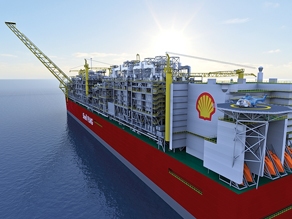Australia's Woodside shelves Browse LNG project
By ROSS KELLY
SYDNEY -- Woodside Petroleum said Friday it has shelved an onshore gas-export project in Australia estimated to cost over $40 billion to build, the strongest sign yet that the country's energy construction boom may be peaking.
Natural gas from the Browse development, which also counts Shell, BP and Asian companies as shareholders, will no longer be piped to a processing facility at James Price Point on the Western Australia state coast, Woodside said in a statement Friday.
The decision means a development of one of Australia's biggest natural gas resources will be pushed back by at least two years, increasing the risk it will have to compete for customers with anticipated gas export projects in North America and East Africa. Woodside and partners can submit new development plans to regulators, but securing approvals is often slow and time-consuming.
Woodside, Australia's second-biggest oil company by output behind BHP Billiton, and partners have spent almost 2 billion Australian dollars ($2 billion) investigating an onshore plant at James Price Point. But Woodside said Friday it "doesn't meet the company's commercial requirements for a positive final investment decision."
The facility would have chilled the resource into liquefied natural gas, or LNG, for export to Asian utilities by tanker.
International energy companies have committed billions of dollars to build seven LNG projects in Australia, positioning the country to overtake Qatar as the world's biggest exporter of the fuel by 2017. Companies like Shell, Chevron and ExxonMobil are drawn by Australia's vast gas reserves, stable political environment and proximity to fuel-strapped Asian economies.
Construction, however, has been marred by a series of cost blowouts triggered by labor shortages, technical challenges and a strong Australian dollar.
Browse also has its own challenges: the resources is located in deep, remote waters, has a high carbon dioxide content and would be technically difficult to extract. Due to be built in a place marked with one of the world's longest chain of dinosaur footprints, the development has faced staunch opposition from environmental groups and has angered some traditional land owners.
"Considering a cheaper capital option is prudent under current circumstances, partly given the uncertain outlook for LNG demand over the next four or five years," said Tim Shroeders, a portfolio manager at Pengana Capital in Melbourne. Pengana doesn't hold Woodside shares.
Alternative options for Browse's estimated 15.5 trillion cubic feet resource cited by Woodside Friday include using a floating LNG vessel, which would process the gas out at sea where it lies. Another would be to pipe the gas to an existing LNG facility on the coast, such as the Woodside-operated North West Shelf plant at a later date.
Shell, which owns 27% of Browse, discovered in 1971, wants to take the floating LNG route.
"We believe Shell's floating LNG technology is the fastest, most economic and the best technical solution available for Browse," Ann Pickard, the head of Shell's Australian operations, said in an e-mailed statement Thursday.
 Shell will use floating LNG to develop its Prelude natural gas resource near Browse, while Exxon and BHP Billiton earlier this month laid out plans to use the technology at their Scarborough joint venture, also off the coast of Western Australia.
Shell will use floating LNG to develop its Prelude natural gas resource near Browse, while Exxon and BHP Billiton earlier this month laid out plans to use the technology at their Scarborough joint venture, also off the coast of Western Australia.
Floating LNG is being pioneered by energy companies seeking to access gas fields too small or remote to develop using pipelines and onshore facilities. However, the technology remains untried and projects face technical risks including withstanding stormy seas and preventing LNG from sloshing around in storage tanks.
Woodside needed to make a final investment decision on James Price Point by June to fulfil a requirement laid down by the government of Western Australia. State Premier Colin Barnett had been a vocal advocate of building a gas processing hub at James Price Point. Spokespeople for Mr. Barnett weren't immediately available for comment Friday.
"Ultimately the decision on the development concept is a commercial one for the joint venture, provided it can meet the requisite regulatory requirements," said Gary Gray, Australia's resources minister, in a statement.
Browse isn't the only Australian LNG project under a cloud. Shell has also raised doubts about the viability of its Arrow LNG joint venture with PetroChina in Queensland state, citing cost pressures.
Dow Jones Newswires






Comments